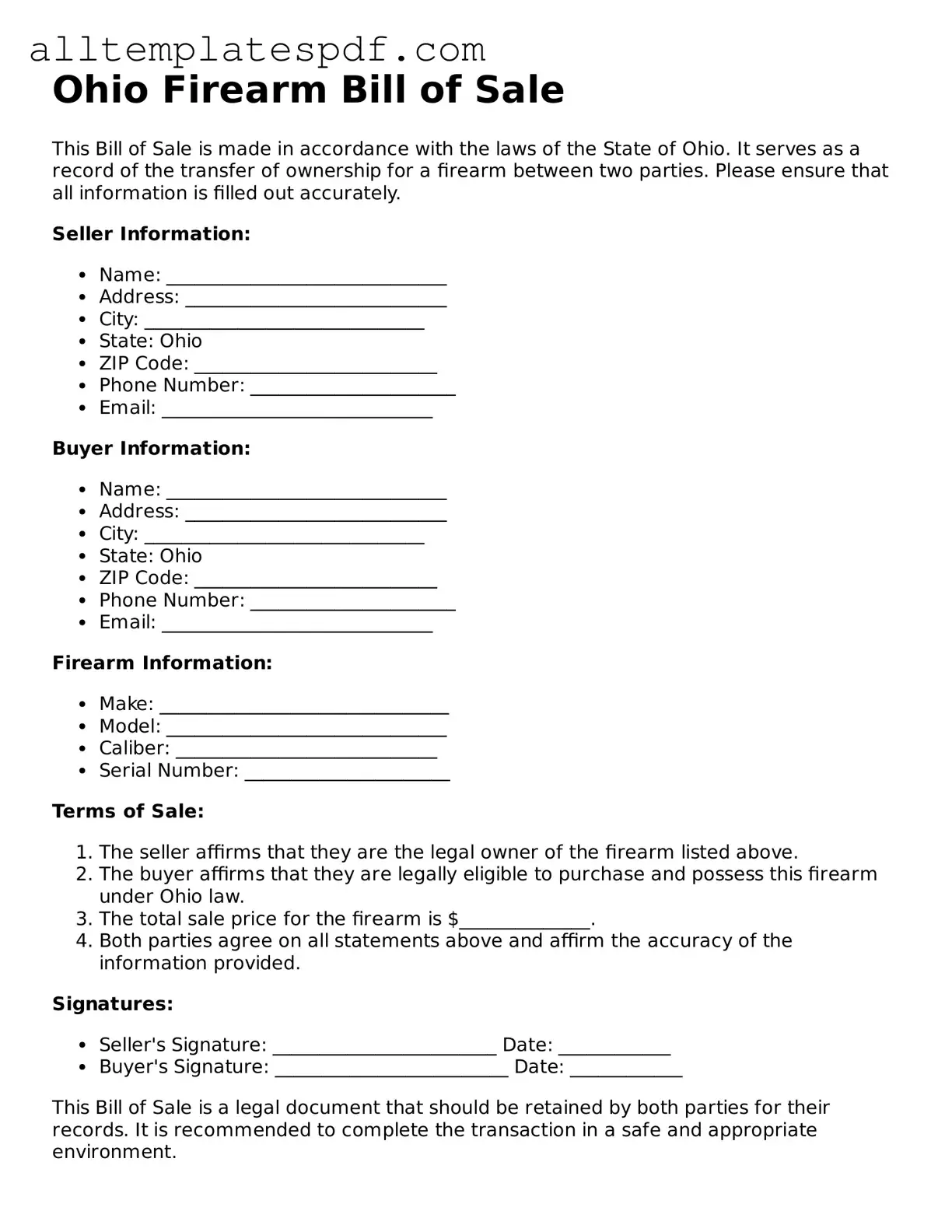When completing the Ohio Firearm Bill of Sale form, many individuals make common mistakes that can lead to complications down the line. One frequent error is failing to provide accurate information about the firearm being sold. This includes details like the make, model, and serial number. Omitting or misrepresenting this information can create issues for both the buyer and seller, especially if the firearm is later linked to criminal activity.
Another mistake involves neglecting to include the date of the transaction. Without a clear date, it becomes difficult to establish when the sale occurred. This can complicate matters if there are questions about ownership or if the firearm is involved in any legal disputes. Always ensure that the date is clearly stated on the form.
People often forget to sign the form. Both the buyer and seller must provide their signatures to validate the transaction. A missing signature can render the document ineffective, leaving both parties without proof of the sale. It's crucial to double-check that both parties have signed before finalizing the transaction.
Additionally, many individuals overlook the importance of including the buyer's information. The buyer’s full name, address, and identification details should be clearly written on the form. This information is vital for record-keeping and can help avoid any future legal issues related to the firearm.
Some sellers mistakenly assume that a verbal agreement is sufficient. However, a written bill of sale is essential for documenting the transaction. A verbal agreement may not hold up in court if disputes arise. Always ensure that a properly filled-out bill of sale is exchanged at the time of the sale.
Another common error is not keeping a copy of the bill of sale. After completing the form, both parties should retain a copy for their records. This serves as proof of the transaction and can be useful for future reference. Failing to do so can leave one or both parties without documentation of the sale.
Lastly, people sometimes ignore the legal requirements surrounding firearm sales in Ohio. Familiarizing oneself with state laws is crucial. Certain restrictions may apply, and understanding these can prevent legal issues. Ignoring these regulations can lead to serious consequences for both the buyer and seller.
